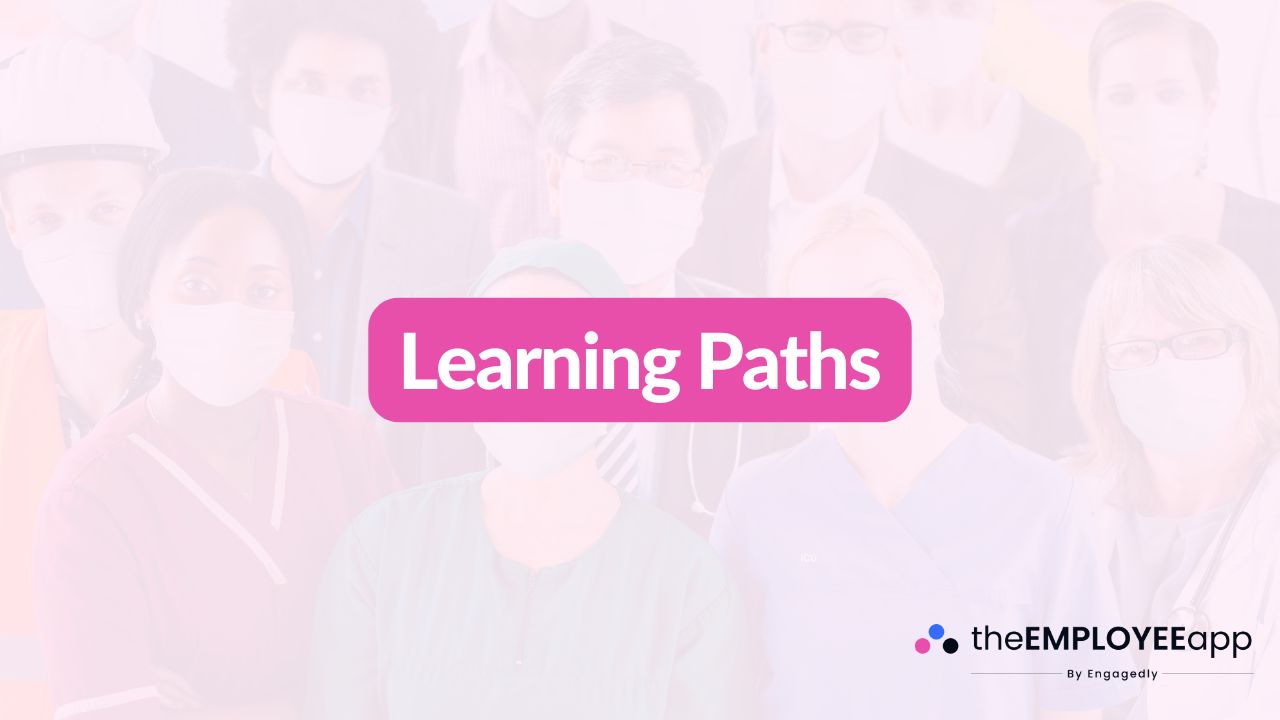
Learning Paths
A learning path is a structured sequence of courses, modules, or training experiences designed to help individuals build skills and achieve specific learning objectives. In the workplace, learning paths provide employees with a clear roadmap to advance their knowledge, improve performance, and grow in their careers. Instead of offering one-off training sessions, learning paths create a progressive journey that allows employees to learn at their own pace while building a strong foundation of skills over time.
What Learning Paths Mean in the Workplace
In professional settings, learning paths are commonly used in employee training and development programs. They provide a clear direction for employees by showing what skills they need to master and in what order. For example, a new manager may begin with leadership basics, move on to conflict resolution, and later explore advanced topics like strategic decision-making. This progression ensures that employees aren’t overwhelmed and that their learning experience aligns with both personal goals and organizational needs.
Types of Learning Paths
Different organizations use learning paths in different ways, but they generally fall into three main categories:
Role-Based Learning Paths: Designed for specific job roles. For instance, customer service representatives might follow a path focused on communication skills, product knowledge, and problem-solving.
Skill-Based Learning Paths: Centered on developing particular skills such as digital literacy, project management, or leadership. Employees can choose paths based on their career aspirations.
Compliance and Mandatory Training Paths: These paths ensure employees complete essential training such as safety protocols, data privacy, or workplace compliance.
By offering multiple types of learning paths, organizations can support diverse employee needs and goals.
Benefits of Learning Paths
Implementing learning paths within an organization provides numerous advantages for both employees and employers:
Clarity and Structure: Employees know exactly what they need to learn and the order in which to learn it, reducing confusion.
Personalized Growth: Paths can be tailored to align with individual career goals, creating a more meaningful learning experience.
Consistency: Standardized training paths ensure that all employees receive the same foundational knowledge, which is especially important in large organizations.
Motivation and Engagement: As employees see their progress step by step, they stay motivated to continue learning.
Better Performance: By building knowledge progressively, employees can apply what they’ve learned in real time, leading to improved job performance.
Retention and Advancement: Employees who see clear opportunities for learning and career development are more likely to stay with the company.
How Learning Paths Are Created
Developing effective learning paths involves careful planning and alignment with business goals. Organizations typically follow these steps:
Identify Skill Gaps: Assess current employee capabilities and compare them to the skills required for success in each role.
Define Learning Objectives: Establish clear outcomes for each stage of the path, ensuring they contribute to career development and organizational success.
Organize Content Progressively: Break down training materials into logical steps, moving from foundational knowledge to advanced concepts.
Incorporate Different Learning Formats: Use a mix of videos, workshops, online modules, and hands-on experiences to keep employees engaged.
Provide Feedback and Assessment: Offer quizzes, projects, or real-world tasks to measure progress and reinforce learning.
Update Regularly: As industries evolve, learning paths must be updated to stay relevant.
Learning Paths in Digital Platforms
With the rise of digital learning technologies, creating and managing learning paths has become more streamlined. Learning Management Systems (LMS) and employee engagement platforms allow organizations to design, assign, and track progress across learning paths. Employees can log in, see their required courses, monitor their progress, and even earn certifications along the way. These platforms also give managers insights into team-wide learning progress, making it easier to align training with performance goals.
Challenges of Learning Paths
While learning paths are effective, organizations may face certain challenges:
One-Size-Fits-All Risk: Generic paths may not meet the unique needs of individual learners.
Employee Overload: If not paced properly, employees may feel overwhelmed with too much content.
Engagement Issues: Without interactive content and reinforcement, some learners may lose interest.
Resource Investment: Designing and maintaining robust learning paths requires time, effort, and financial resources.
To overcome these challenges, companies should personalize learning paths, integrate engaging content, and ensure managers support employees in their learning journey.
Why Learning Paths Are Essential for the Future of Work
As industries evolve rapidly, employees must continuously reskill and upskill to remain competitive. Learning paths provide the structure and motivation needed to meet these demands. For organizations, they offer a way to future-proof their workforce, ensuring that employees are ready to adapt to new technologies, processes, and market challenges. For employees, learning paths provide clarity, direction, and confidence in their professional development.
Conclusion
Learning paths are more than just a sequence of courses—they are strategic tools that help employees grow, organizations thrive, and workplaces remain competitive in a fast-changing world. By investing in well-designed learning paths, businesses can build a culture of continuous development and ensure that both employees and employers achieve long-term success.